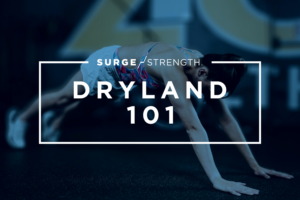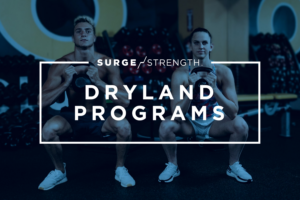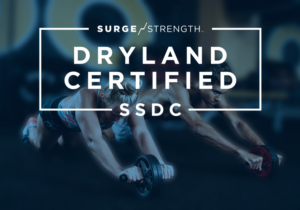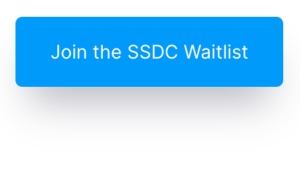Dryland for age-group swimmers can sometimes be confusing but knowing the researched “best practices” for these athletes is a great place to start. Working with youth athletes ages 11-14 requires a special set of coaching skills. Because children hit puberty at different rates, some mature faster than others (both mentally and physically). This age group also has a spectrum of athletic ability. Some athletes are very comfortable playing sports during this phase, while others are still growing into their bodies, and feelings of awkwardness play a role in their performance. All these factors can make coaching this age group tricky yet rewarding. By implementing the 10 coaching considerations listed below, coaches can set up dryland for success for our 11-14-year-olds:
1) Know the Science Behind Your Dryland Training
The 11-14 age range is a critical time period for coordination development and neuromuscular activity. As a child grows and discovers new movements, their brain recruits more motor units. These motor units are the brain’s way of developing coordination through physical activity. In turn, this makes children more athletic. Regardless if the child grows up to be an Olympic swimmer, moves on to other sports, or falls somewhere in-between, these motor units provide them with better movement patterns as they continue to grow.

- Motor Unit – a motor neuron and all of the fibers it innervates
2) Generate Basic Athleticism in Dryland for Age-Group Swimmers
New movement patterns also develop by giving the brain as much feedback as possible. To accomplish this, we recommend incorporating 3 main types of muscle contractions into each dryland session. The first type of muscle contraction is called program concentric, or muscle “shortening” contractions. Examples of concentric contractions include starts off the block or jumping explosively into the air.
The second type to teach athletes is called the eccentric, or “lengthening” contractions. These are exercises that require the athletes to absorb force. Think of their ability to land and stick a jump. Lastly, add in isometric contractions. These are trained through holding an exercise. Isometrics are great because they produce muscular endurance. Some examples are planks and wall sits.
Overall, promote a spectrum of ways to hit all three of these muscular contractions. This way, swimmers increase their potential for athleticism. When combined, the concentric, eccentric, and isometric exercises build a base of strength, power, and endurance that make swimmers more competitive as they progress in the sport.
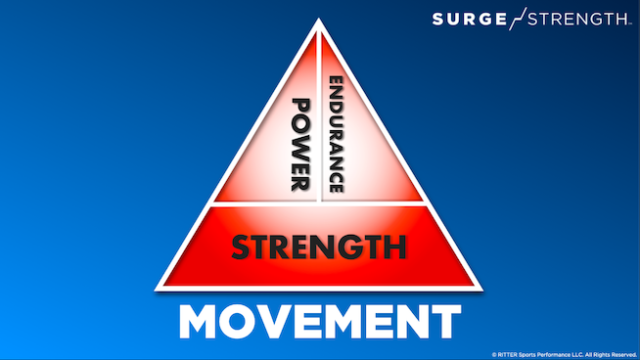
- Through concentric, eccentric, and isometric loading, swimmers build a base of strength that ignites their success as a swimmer. Power and endurance build off a solid strength foundation. Combined, strength, power, and endurance make-up athleticism.
3) Coach to Their Level
Something that many people forget is that athletes have two different ages: a chronological and biological age. The chronological age goes by the athlete’s birthday. However, biological age refers to physical and cognitive development. Some swimmers might be the same age chronologically, but very different biologically. Coaches must tailor their dryland program to the maturity level and physical ability of the athletes at hand. We can’t assume that “older” athletes are always more developed. Ultimately, your athletes determine their potential for dryland based on their differing ages.
4) Set Boundaries on Resistance Training in Dryland for Age-Group Swimmers
There are two pre-requisites to consider before beginning external resistance training. First is the athletes’ willingness to learn. Weight training becomes dangerous when kids don’t follow directions. Therefore, they must be mature enough to take weight training seriously. Secondly, athletes should show interest in weight training. If your team simply isn’t ready for weight training, that’s okay. It is better to wait until they are excited about lifting than to force it and leave them feeling burnt out before they even get to high school. Remember that this is the time to build a foundation of technique rather than focusing on weight.
5) Prioritize Your Goals
The good news is that almost any training at this age will make kids faster swimmers. 11-14-year-olds athletes are the equivalent of sponges in terms of gaining strength. Instead of concentrating on the nitty-gritty of training, teach your athletes what a structured dryland program looks like. Your program should inspire swimmers to express interest in weight training. This is the perfect time to set the goal to teach them simple exercises and basic movement patterns. The results of your program should easily convert to any sport. Dryland at this level is intended to help swimmers find the rhythm in their bodies and understand training expectations.
6) Keep it All (mostly) Fun & Games in Dryland for Age-Group Swimmers
About 2/3 of each dryland session should be fun and games. Games and movement discovery activities are fun, simple, and effective ways to keep athletes engaged. They also accomplish our primary goal of building strength and coordination. Below, watch how we recommend incorporating games into dryland for age-group swimmers in the SURGE Strength Dryland Certification Curriculum:
7) Implement External Resistance Training in Dryland for Age-Group Swimmers
Resistance training allows you to scale workouts to accommodate the spectrum of abilities within your group. For example, when you progress bodyweight exercises, the only way you can truly scale the exercise is by changing angles. When adding external resistance (think bands, balls, dumbbells), there are many more ways to challenge or regress exercises without losing the integrity of the movement. The best way to add resistance training to your dryland plan for this group is to choose one movement from each of the 5 movement categories: push, pull, hinge, squat, and brace.
8) Include Both Repetition & Variety with This Training Outline
Every dryland program needs both repetition and variety. At this stage, repetition comes by learning basic structured movements. SURGE Strength recommends that these take up about 1/3 of each dryland session. Variety comes from games, which takes up the rest of your training time. Create some outcome-based goals. Implement reps and sets for some exercises. Then, be sure to bridge these closed concepts with plenty of opportunities for fun and games. Dryland should have structure at this age, but formal training should not overtake the program. See our example of a dryland session below:
– Warm-up/Function (optional) = 5-10 minutes
– Games and movement discovery activities = 10-30 minutes
– Fundamental resistance training exercises = 10-30 minutes
- Not all training days should look exactly the same. Read the group. Some days can be more challenging and focus on getting work done. Other days should have more fun & games.
9) Enhance Your Coaching Cues
11-14-year-old swimmers perform best by learning just a few exercises at a time. Stick to basic movements that they progress as they get older (i.e. push-ups, squats, pull-ups). Then, model perfect form. Give them a visual cue. Choose just 1 or 2 cues to focus on rather than bombarding them with lengthy explanations for each exercise. Then, only hold them responsible for nailing 1 or 2 key concepts from each exercise. External coaching cues work great with this group. An example with a push-up is, “push the floor away as you straighten your arms in order to physically push-up.”
10) Know Your Audience
11-14 year old’s should be treated age-appropriately – both chronologically and biologically. Start by giving swimmers a quick overview of the session. Set expectations at the beginning of each session to help keep athletes on track. Keep rules simple to follow. For example, your rules could be “have fun, don’t talk while the coach is talking, and work hard.” End each session on a high note by recapping what they accomplished that day. Above all, don’t take yourself too seriously. Avoid the urge to over coach and just let these athletes have fun. Most importantly, encourage athletes that dryland can be fun and effective as they advance to high school swimming.
Take time as a coach to reflect on ways to improve your coaching approach using these 10 considerations. If nothing else, remember that coaching this age group is an honor and a privilege. You get to navigate athletes through the unique obstacles that puberty can present and help them understand how to move their bodies. You set the stage for more structured dryland training as they grow up and move on to high school programs. These swimmers will carry the training principles, skills, and memories of 11-14-year-old dryland with them as they mature into adulthood.
ENROLL IN A DRYLAND 101 COURSE FOR FREE
MORE DRYLAND RESOURCES FROM SURGE STRENGTH:
GET STARTED WITH A DRYLAND PROGRAM
LEARN ABOUT BECOMING SSDC

SURGE Strength’s Mission:
BUILD BETTER ATHLETES
GENERATE FASTER SWIMMERS
Courtesy of SwimSwam’s exclusive dryland training partner, SURGE Strength.
SURGE Strength, a strength training brand created by Chris Ritter, CEO of RITTER Sports Performance, aims to build better athletes and faster swimmers through dryland programs and educational courses.
Get started with a SURGE Strength Dryland Program or enroll in a dryland course in the SURGE Strength Academy today!



